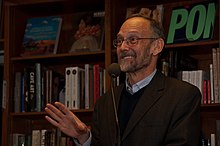
Cooking, also known as cookery or professionally as the culinary arts, is the art, science and craft of using heat to make food more palatable, digestible, nutritious, or safe. Cooking techniques and ingredients vary widely, from grilling food over an open fire, to using electric stoves, to baking in various types of ovens, reflecting local conditions.
In food processing, brining is treating food with brine or coarse salt which preserves and seasons the food while enhancing tenderness and flavor with additions such as herbs, spices, sugar, caramel or vinegar. Meat and fish are typically brined for less than twenty-four hours while vegetables, cheeses and fruit are brined in a much longer process known as pickling. Brining is similar to marination, except that a marinade usually includes a significant amount of acid, such as vinegar or citrus juice. Brining is also similar to curing, which usually involves significantly drying the food, and is done over a much longer time period.
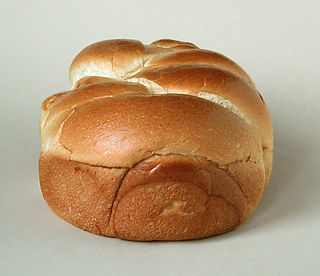
The Maillard reaction is a chemical reaction between amino acids and reducing sugars to create melanoidins, the compounds which give browned food its distinctive flavor. Seared steaks, fried dumplings, cookies and other kinds of biscuits, breads, toasted marshmallows, and many other foods undergo this reaction. It is named after French chemist Louis Camille Maillard, who first described it in 1912 while attempting to reproduce biological protein synthesis. The reaction is a form of non-enzymatic browning which typically proceeds rapidly from around 140 to 165 °C. Many recipes call for an oven temperature high enough to ensure that a Maillard reaction occurs. At higher temperatures, caramelization and subsequently pyrolysis become more pronounced.

Searing, or pan searing is a technique used in grilling, baking, braising, roasting, sautéing, and the like, in which the surface of the food is cooked at high temperature until a browned crust forms. Similar techniques, browning and blackening, are typically used to sear all sides of a particular piece of meat, fish, poultry, etc. before finishing it in the oven. To obtain the desired brown or black crust, the meat surface must exceed 150 °C (300 °F), so searing requires the meat surface be free of water, which boils at around 100 °C (212 °F).

A Mornay sauce is a béchamel sauce with shredded or grated cheese added. Some variations use different combinations of Gruyère, Emmental cheese, white cheddar or even Parmesan cheese. A Mornay sauce made with cheddar is commonly used to make macaroni and cheese.

Egg white is the clear liquid contained within an egg. In chickens, it is formed from the layers of secretions of the anterior section of the hen's oviduct during the passage of the egg. It forms around fertilized or unfertilized egg yolks. The primary natural purpose of egg white is to protect the yolk and provide additional nutrition for the growth of the embryo . Egg white consists primarily of about 90% water into which about 10% proteins are dissolved. Unlike the yolk, which is high in lipids (fats), egg white contains almost no fat, and carbohydrate content is less than 1%. Egg whites contain about 56% of the protein in the egg. Egg white has many uses in food as well as many other uses.

Masa or masa de maíz is a maize dough that comes from ground nixtamalized corn. It is used for making corn tortillas, gorditas, tamales, pupusas, and many other Latin American dishes. It is dried and powdered into a flour form called masa harina. Masa is reconstituted from masa harina by mixing with water before use in cooking.
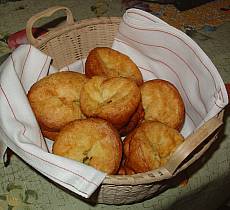
A popover is a light roll made from an egg batter similar to that of Yorkshire pudding, typically baked in muffin tins or dedicated popover pans, which have straight-walled sides rather than angled.

Court-bouillon or court bouillon is a quickly-cooked broth used for poaching other foods, most commonly fish or seafood. It is also sometimes used for poaching vegetables, eggs, sweetbreads, cockscombs, and delicate meats. It includes seasonings and salt but lacks animal gelatin.
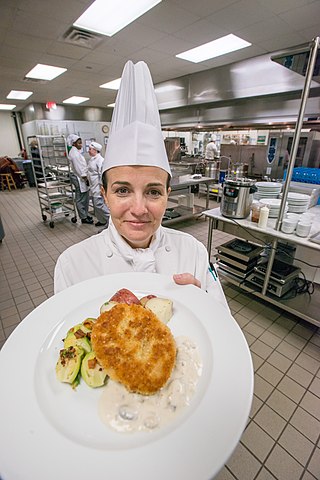
Culinary arts are the cuisine arts of food preparation, cooking, and presentation of food, usually in the form of meals. People working in this field – especially in establishments such as restaurants – are commonly called chefs or cooks, although, at its most general, the terms culinary artist and culinarian are also used. Table manners are sometimes referred to as a culinary art.

Molecular gastronomy is the scientific approach of cuisine from primarily the perspective of chemistry. The composition, properties and transformations of an ingredient are addressed and utilized in the preparation and appreciation of the ingested products. It is a branch of food science that approaches the preparation and enjoyment of nutrition from the perspective of a scientist at the scale of atoms, molecules, and mixtures.

Doneness is a gauge of how thoroughly cooked a cut of meat is based on its color, juiciness, and internal temperature. The gradations are most often used in reference to beef but are also applicable to other types of meat.
Sharon Rugel Long is an American plant biologist. She is the Steere-Pfizer Professor of Biological Science in the Department of Biology at Stanford University, and the Principal Investigator of the Long Laboratory at Stanford.

Shogaols are pungent constituents of ginger similar in chemical structure to gingerol. The most common of the group is [6]-shogaol. Like zingerone, it is produced when ginger is dried or cooked. Moreover, shogaol are converted to other constituents when heat is applied over time, which is why ginger loses its spiciness as it is cooked.

On Food And Cooking: The Science And Lore Of The Kitchen is a book by Harold McGee, published by Scribner in the United States in 1984 and revised extensively for a 2004 second edition. It is published by Hodder & Stoughton in Britain under the title McGee on Food and Cooking: An Encyclopedia of Kitchen Science, History and Culture.

Humans and their hominid ancestors have consumed eggs for millions of years. The most widely consumed eggs are those of fowl, especially chickens. People in Southeast Asia began harvesting chicken eggs for food by 1500 BCE. Eggs of other birds, such as ducks and ostriches, are eaten regularly but much less commonly than those of chickens. People may also eat the eggs of reptiles, amphibians, and fish. Fish eggs consumed as food are known as roe or caviar.
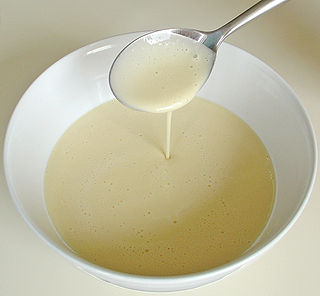
The batter is a flour mixture with liquid and other ingredients such as sugar, salt, and leavening used for cooking. It usually contains more liquid than dough, which is also a mixture of flour and liquid. Batters are usually a pourable consistency that cannot be kneaded. The batter is most often used for pancakes, light cakes, and as a coating for fried foods. It is also used for a variety of batter breads.
Tenderness is a quality of meat gauging how easily it is chewed or cut. Tenderness is a desirable quality, as tender meat is softer, easier to chew, and generally more palatable than harder meat. Consequently, tender cuts of meat typically command higher prices. The tenderness depends on a number of factors including the meat grain, the amount of connective tissue, and the amount of fat. Tenderness can be increased by a number of processing techniques, generally referred to as tenderizing or tenderization.
Gastrophysics is an emerging interdisciplinary science that employs principles from physics and chemistry to attain a fundamental understanding of the worlds of gastronomy and cooking. Gastrophysical topics of interest include investigations of the raw materials of food, the effects of food preparation, and quantitative aspects of the physical basis for food quality, flavour, appreciation and absorption in the human body.
The Center for Genomic Gastronomy is an independent research group that examines the biotechnology and biodiversity of human food systems. The Center was founded in 2010 in Portland, Oregon and currently has research nodes in Bergen; Santa Cruz, CA; Porto; Dublin and Chennai. They are sometimes described as an artist-led think tank.
